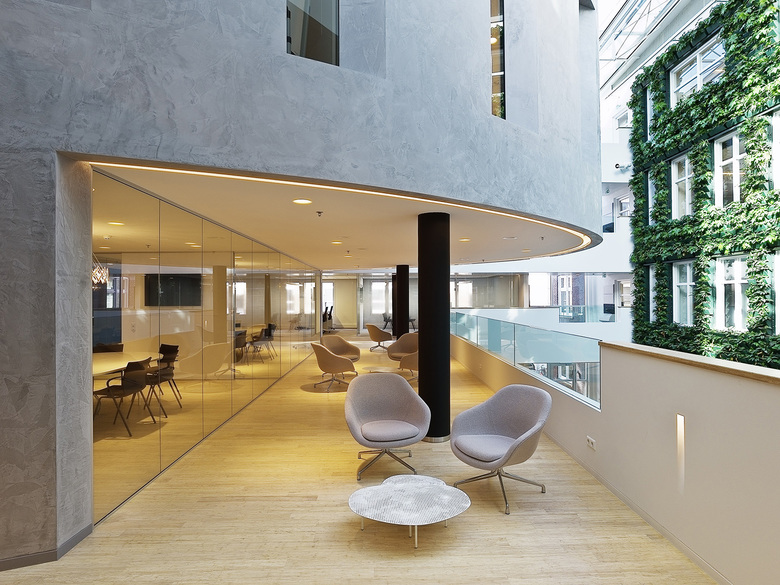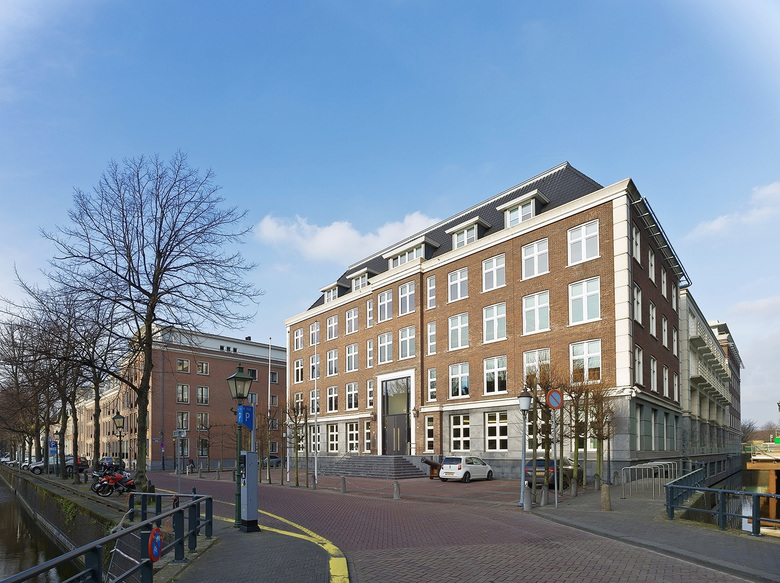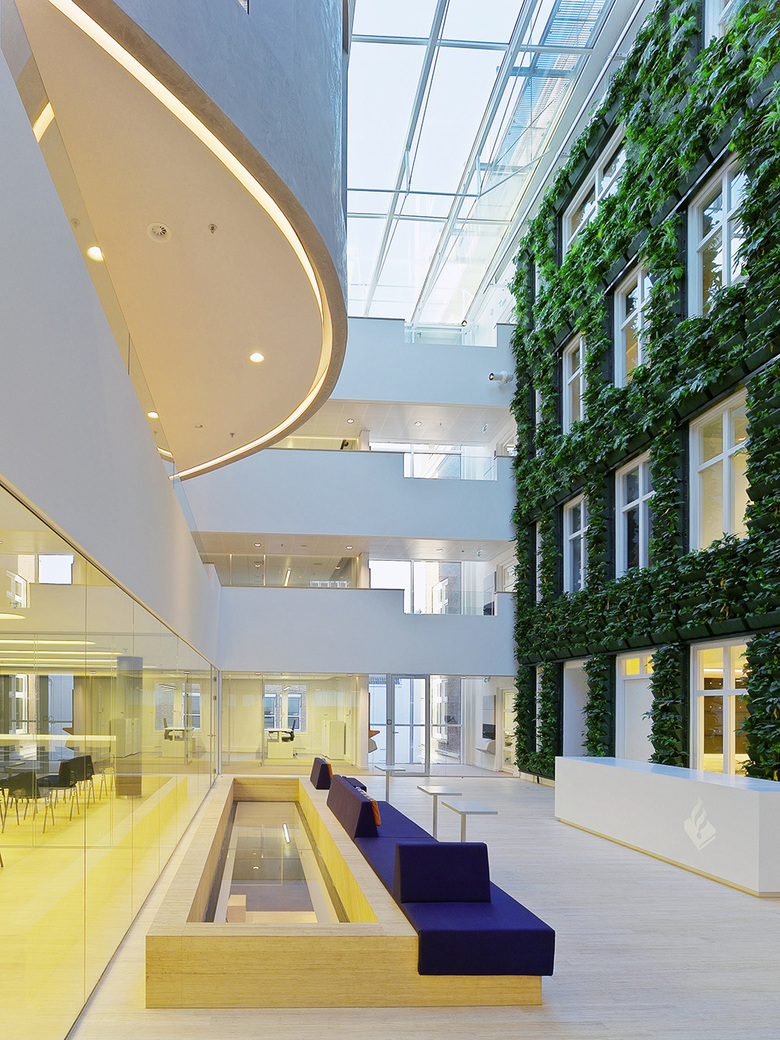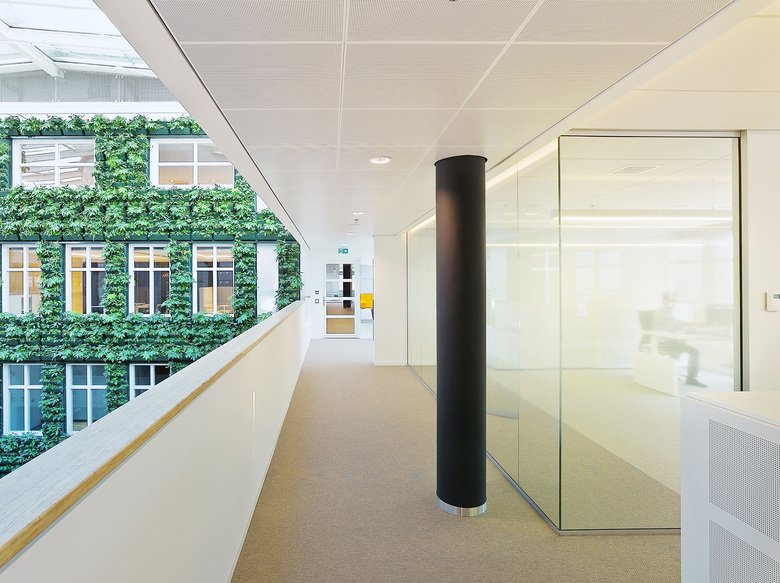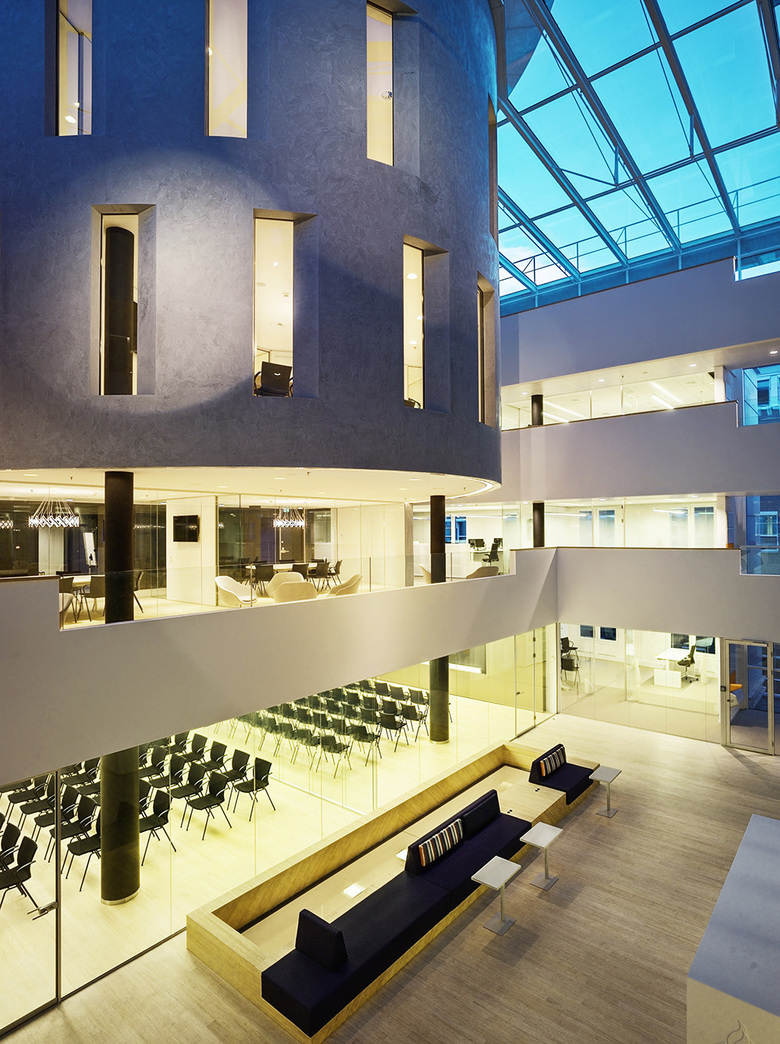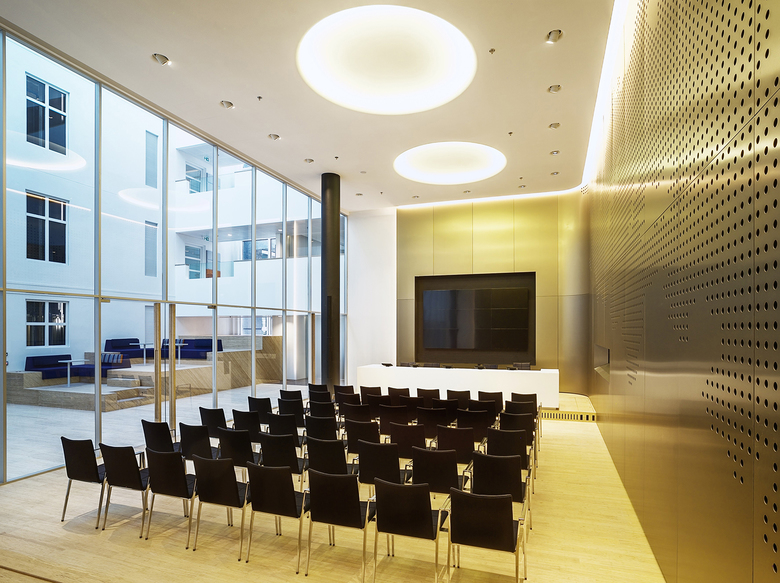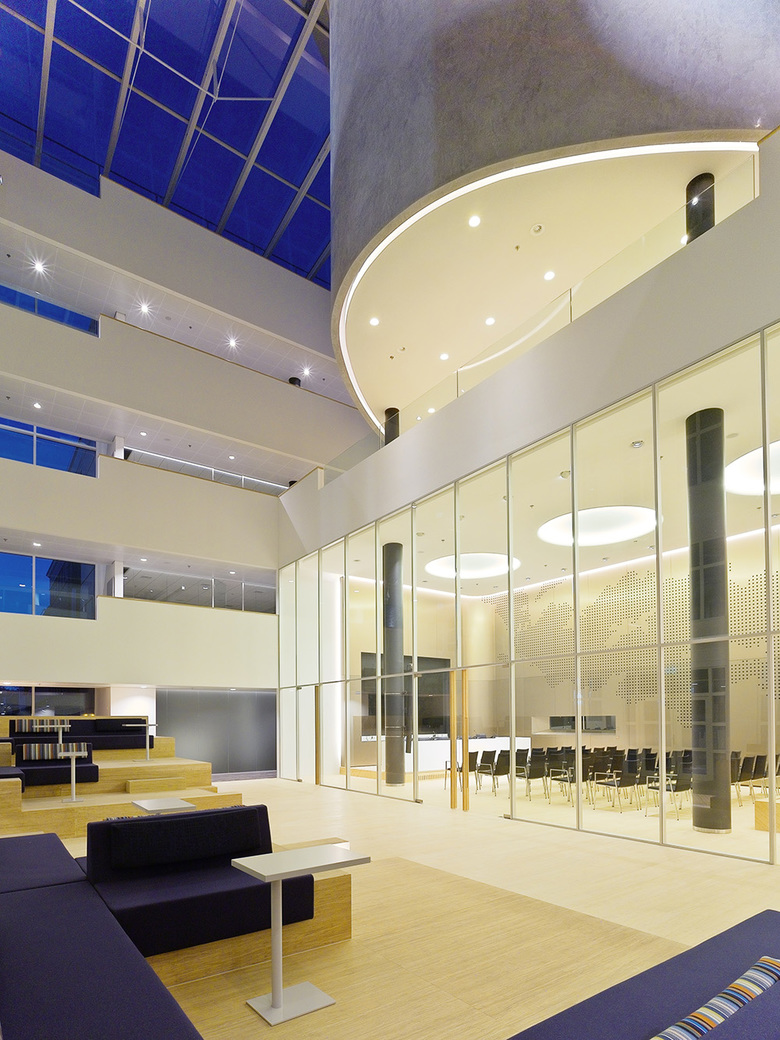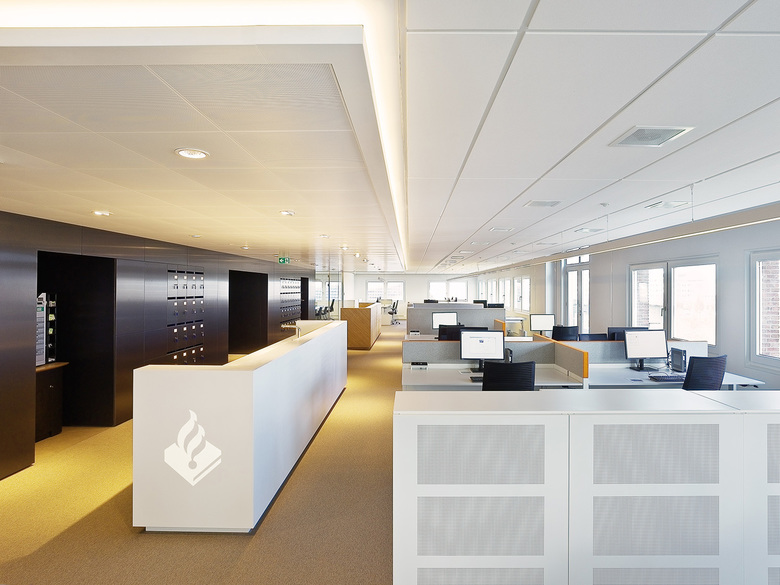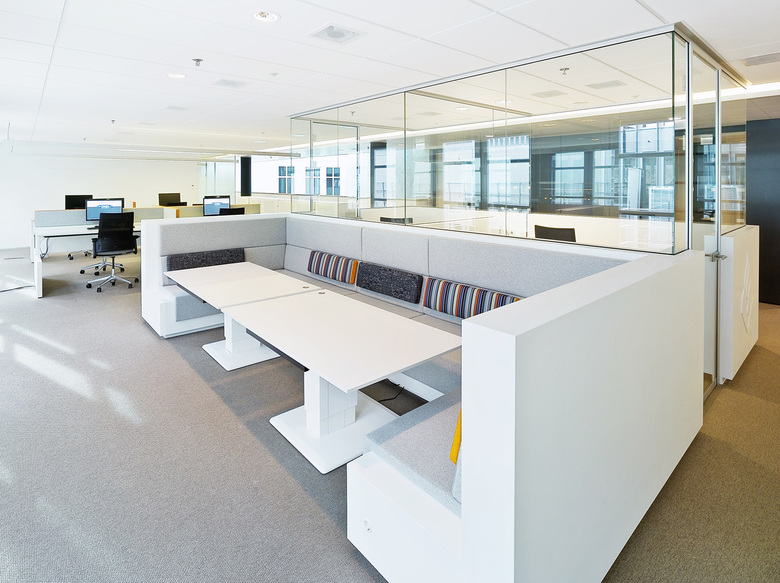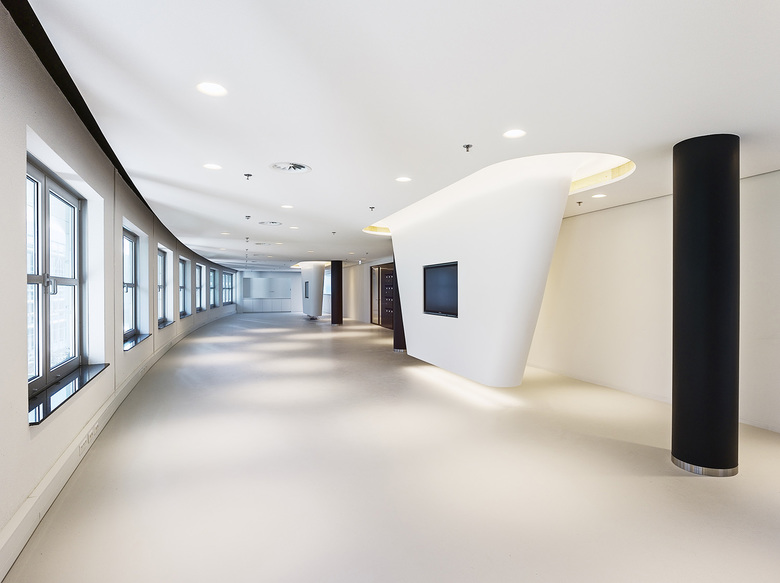Ector Hoogstad Architecten
Headquarters Dutch Police
Ector Hoogstad Architects has transformed De Artillerie, an office complex on the Nieuwe Uitleg in The Hague built in a historicising style in the 1990s, into the new police headquarters.
“De Artillerie is a relatively new building, many features of which are still usable,” said Joost Ector, director of the Rotterdam-based architectural practice. “It has an interesting structure with a spatial quality that was completely neglected in the original design. Thanks to a number of substantial interventions it has been transformed into a pleasantly spacious, light and airy building with just the right atmosphere for a police headquarters.”
The previous 25 police forces in the Netherlands were merged into a single organization with ten regional units under one single Chief of Police on 1 January 2013. This new organization needed accommodation that was as flexible as possible, to give it room to develop. The core of the building containing specialized functions such as the press room, National Briefing Room, meeting and conference rooms and foyers surrounded by peripheral office space with team offices, individual offices and six hundred hot-desk work sites. Glass interior walls provide openness and daylight throughout the depth of the building, while a subtle print on the glass ensures privacy. The high degree of transparency mean that people can find and meet one another easily.
At the beginning of the renovation process, the design team made a careful strategic assessment of which elements of De Artillerie could appropriately be reused, both from an economic perspective and with regard to sustainability and aesthetics. The elements that were retained included toilet blocks, kitchens, certain parts of technical installations and cable ducts. “Waste could be reduced to a minimum by not simply stripping the building but investigating in detail which elements had residual value that could be integrated into the design. This helped us to comply very effectively with the client’s ambitious sustainability and budgetary requirements,” Joost Ector went on.
The police attach a great deal of importance to future-proofing the building. This meant that close attention had to be paid to flexibility and adaptability. The careful combination of hot-desk work sites, individual offices and meeting spaces means that departments can grow or shrink easily. We also gave a lot of attention to sustainability. Improving the effectiveness of the partially reused installations (for example by introducing new control systems) has made the building much more energy-efficient. The materials used were also selected on the basis of minimal environmental impact, while the atrium has been provided with a four-story plant wall for a pleasant and healthy interior environment.
The choice of materials and colors is balanced and timeless. “The colour scheme used throughout the building is almost entirely based on the traditional Dutch police colors, blue and gold. This keeps the interior recognizable, but allows for variation,” explained Joost Ector. The interior concept is based on a tripartite division as regards the use of colors and materials. Firstly, there are the office areas in light to middle grey augmented with shades of blue. Spaces used for public functions feature wooden or metal accents. Finally, the palette for the specialized spaces was made somewhat heavier by the use of bronze and stone tints in combination with glass and steel.
The integrated design process – from structural interventions up to and including the installation of movable furniture – was completed in an unusually short time thanks to clear choices and well-defined assumptions. Ector Hoogstad Architects was responsible for overall engineering for both architecture and interior work at the request of the client. The design team was complemented by the subcontractors Deerns (technical installations), IMd Consulting Engineers (structural work) and IGG (construction costs). The project was put out to tender on the basis of a detailed preliminary design; this approach saved time and helped to integrate implementation expertise into the design. The design process started in the autumn of 2013. The project was put out to tender the same year, and was completed in early 2015.
PROJECT CREDITS
Client
Korps Nationale Politie
Design (total engineering)
Ector Hoogstad Architecten
Project team
Joost Ector, Max Pape, Lennaert van Capelleveen, Markus Clarijs, Sabine Alders, Pim Bangert, Laurence van Benthem, Kees Bongers, Arja Hoogstad, Randy Lutteke, Hetty Mommersteeg, Ralph Noordhoek Elia Salcedo, Jaap Veldkamp
Completion
2015
Gross floor area
14,400m2
Construction management
IMd Raadgevende ingenieurs
Installation consultants
Deerns raadgevende adviseurs bv
Building physics and fire safety
Deerns raadgevende adviseurs bv
Costs consultants
IGG
Main contractor
De Vries en Verburg
Photography
Petra Appelhof
Articles liés
-
Chambre de Métiers et de l'Artisanat Hauts-De-France
KAAN Architecten, PRANLAS-DESCOURS architect & associates | 03.09.2019 -
-
-
